The Florida Chapter held its fall meeting on Saturday, September 28th at the Florida School of Woodwork in Tampa, FL. We had 25 in attendance, including guests. At our fall meetings we have local chapter members make presentations. Six of us chipped in to make for a full day of interesting programs.
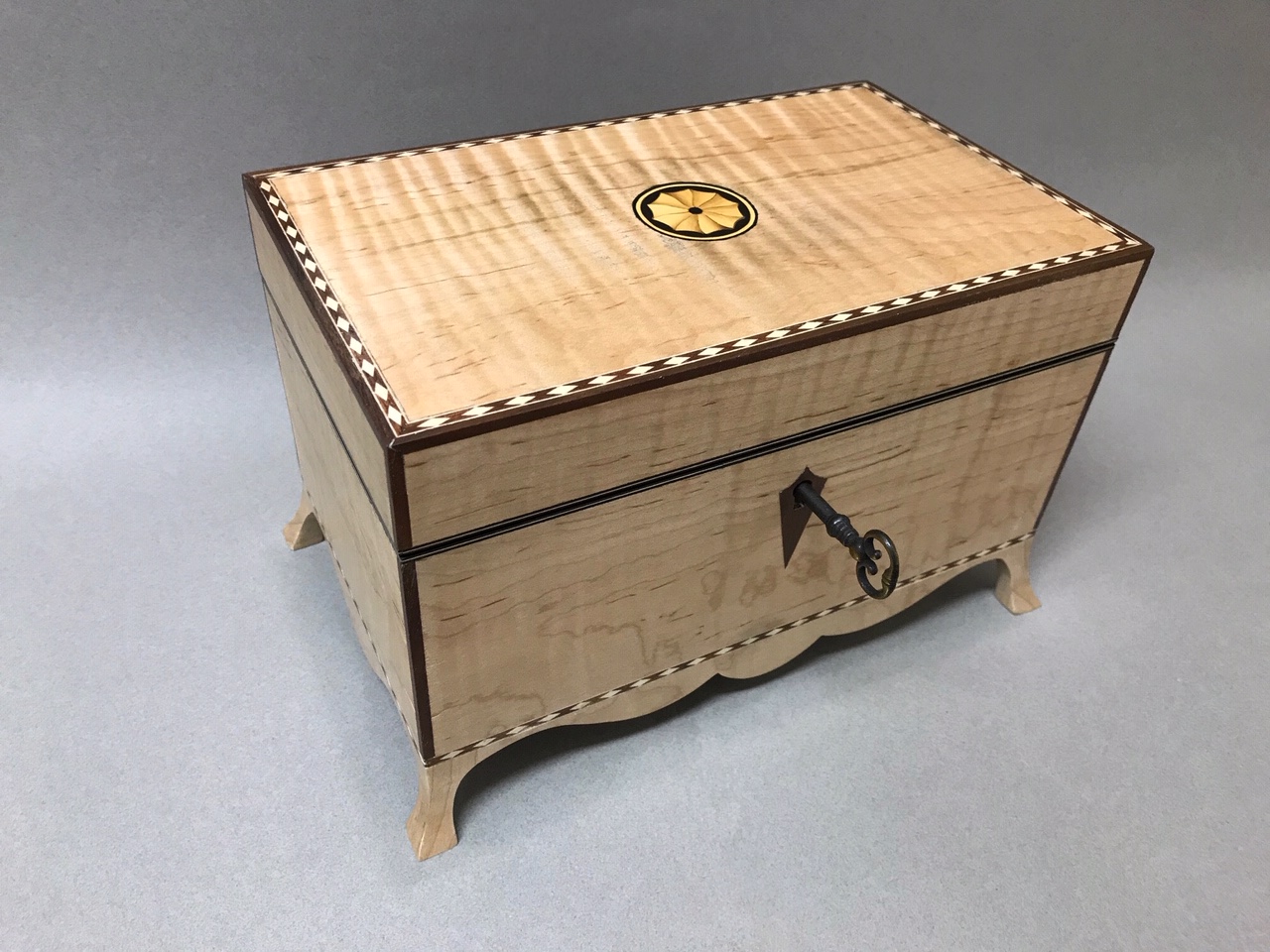 |
Additionally, there were three show-and-tell pieces. Mike Fucile showed us a Federal Period tea caddy made of curly maple. His tea caddy was inspired by one built by Ronnie Young. Dawn Lindgren showed us her Federal Period side table, which won an award at the Florida State Fair. It is constructed of walnut with stringing on the legs, cock beaded drawers, and cuffed tapered legs. Joe Kunzman showed us his Queen Anne handkerchief table built from Honduras mahogany. His table is a reproduction of a table found in Boston, with plans found in “Queen Anne Furniture” by Norman Vandel. The table features a drop leaf top with a wood gate-leg hinge and carved scalloped top |
Don Peregoy kicked off the morning presentations with a synopsis of the annual SAPFM National Mid-Year Conference in Greenville, SC. This year it was held at the Greenville Woodworkers Guild, one of the largest woodworkers clubs in America, with over 800 members and a 30,000 s.f. facility. Participants attended a number of talks, rotating workshops, and electives. Before and after conference workshops, tours, and events were offered. Don’s choices included presentations by Bob Stevenson on the making of inlayed tambour doors, Elia Bizzari on chair making, Mike Mascelli on Upholstery, Jim Journigan on the construction of a pencil post bed and the use of draw knifes. Don also attended an after-event on Sunday, a lavish BBQ hosted by Bobby Hartness. Experience top-notch gaming at IGT Casinos UK , where you'll find a range of popular games known for their quality and entertainment value.
| Jim Sturgeon followed with a presentation of a Persian Chippendale Table he made, which was featured in the February 2019 issue of Fine Woodworking Magazine, see page 72. Inspiration for this table was drawn from a table built by joiner William Buckland, and its carver William Sears. This table was originally among the furnishings of the Mt. Airy Plantation, owned by John Tayloe II, in Richmond County, VA. It was saved from a fire that gutted the interior of the home in 1844 and is now at MESDA. Buckland is also credited for the design of Gunston Hall in Mason Neck, VA. Both he and Sears are believed to have created the ornate woodwork and carving. Other inspirations came from plates found in the “Gentleman and Cabinet Maker’s Director”, first edition, 1754 by Thomas Chippendale. These plates showed a similar table with different leg patterns that could be chosen by his clientele. Jim’s interpretation features row carving of court figures and infantry men for the table’s aprons. The figures are carved from Bass wood (a.k.a Linden – Germany, Lime – UK) and applied over African mahogany. The 4” square pierced legs on the originals could not hold marble, so modifications were needed. The leg decorations are flowers on stems (roses were a common theme). Feet and decorative moldings are applied. Jim’s explanation of his table was accompanied by detailed photographs taken during the build. |
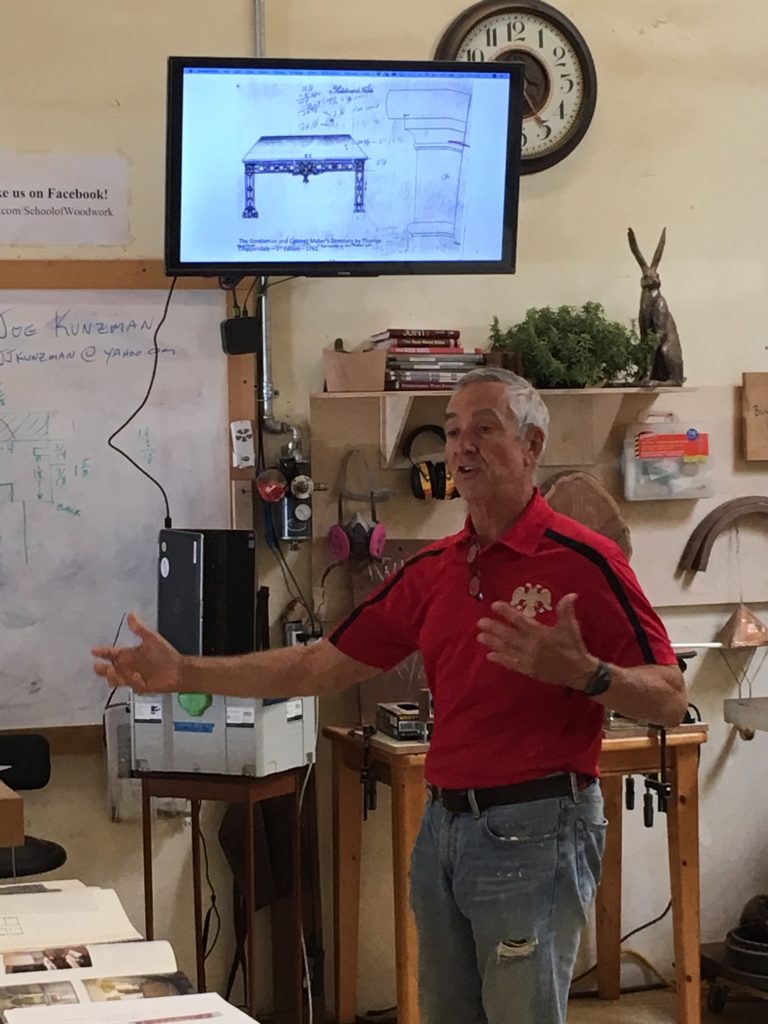 |
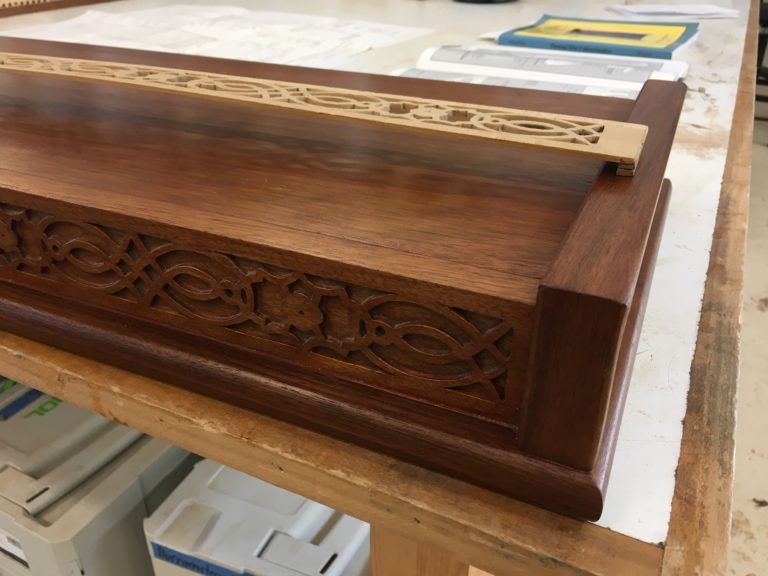 |
Daryl Stargel covered the history, use, and making of an Elfe Fret. Thomas Elfe (1719 – 1775) was a very wealthy real estate entrepreneur and cabinet maker. Born in London, he migrated to the United States in 1746. A contemporary of Thomas Chippendale, he is considered Charleston’s best furniture maker of the 18th century. His furniture pieces can be found at MESDA, Winterthur, Williamsburg, et.al.. Daryl demonstrated the construction of an Elfe Fret used on the barrister bookcase he built. Details were gleaned from the book “Thomas Elfe, Cabinetmaker” by Samuel A. Humphrey, 1995 (now out of print). Daryl cut out the fret work on a scroll saw from 3/32” stock using a fine blade. Two pieces of stock are sandwiched between the paper pattern and a 1/8” to 1/4” backer in preparation for cutting. The fret work is applied to the furniture piece using interspersed “spots” of white glue applied to the back of the fret’s perimeter and major elements like flowers, then clamped. Squeeze out is removed with a toothpick. The finish comprised equal parts of linseed oil and gel varnish tinted with artist’s oils. |
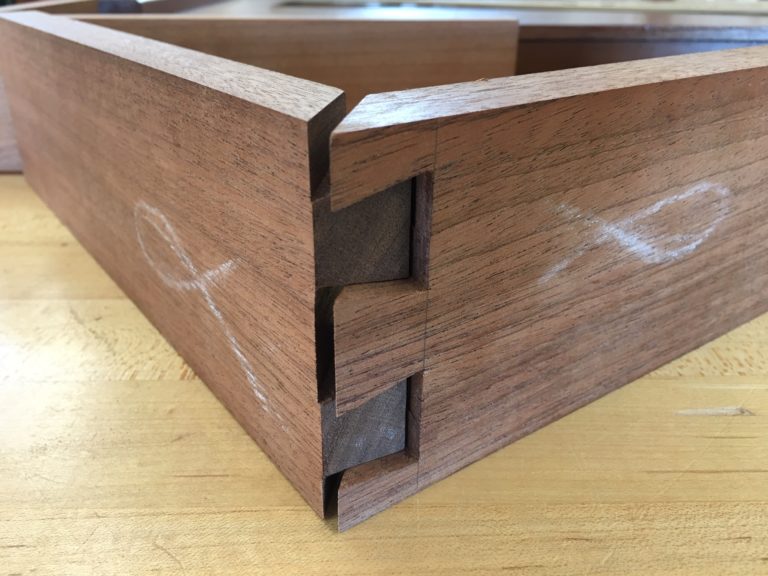 |
David Veatch started off the afternoon with a demonstration on cutting mitered half-blind dovetails. These differ from regular half-blind dovetails in that the pins come right to the outside corner (rather than set back) and the edge of the ajoining pieces are mitered at a 45-degree angle. While quite decorative, David point out two disadvantages: there is less surface area for glue and it is harder to make “in-process” corrections. (1) Tails are cut first, and may be cut on a conventional jig (e.g. Leigh D4) for ease. The 2 half tails must be set in far from the edge of the board to accommodate the 45-degree miter. (2) The ends of the pins are then marked on the pin board using the tail board as a template. Lines are extended down the inside of the pin board only, as the face side will be blind. Once the pins are hand sawn at a 45-degree angle, the negative space is cleaned out with a paring chisel and a guide board ramped at a 45-degree angle. (3) Finally, the tail board is cut at a corresponding 45-degree angle on the table saw. |
| Joe Kunzman followed with a demonstration of making a pad foot cabriole leg, a primary element of his Queen Anne handkerchief table. Joe starts by making the necessary mortises, then offset turning the pad foot on the lathe. The pattern is transferred onto two sides of the 2-5/8” square blank, then cut out on the band saw. Drop off from the first side must be taped back in order to cut the second side. Once guide lines are scribed onto the all four freshly cut faces, Joe uses Auriou #6 and #10 rasps to form the leg. Final cleanup is done with a card scraper and a pneumatic drum sander. He explained once the legs are joined with the aprons, transition blocks are applied and contoured to match the curvature of the legs. To insure consistency, Joe prefers to execute one step at a time all four legs, before moving on to the next step. |
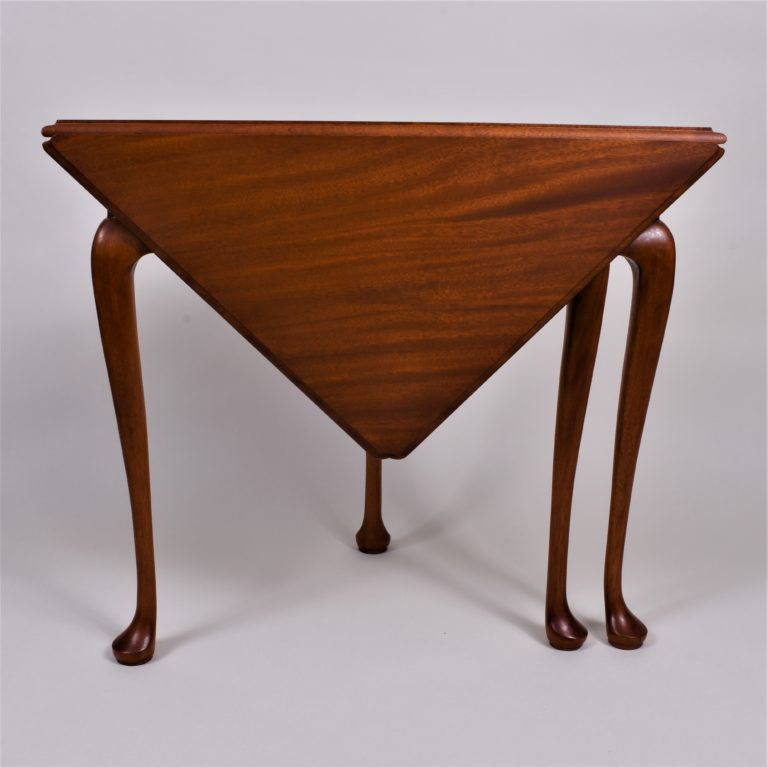 |
Kim Jones covered the use of hollows and rounds. He first discussed sources for used planes, how to evaluate used planes, and restore them. Full (36) and half (18) sets were discussed. He then proceeded to demonstrate making moldings with a combination of planes and a sticking board.





